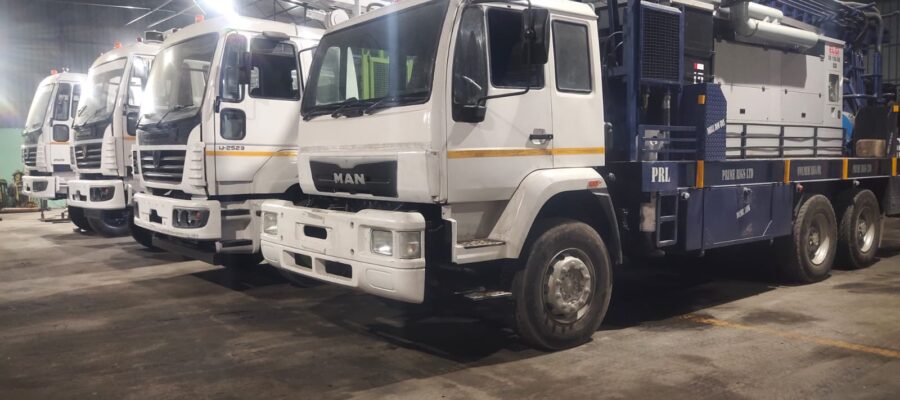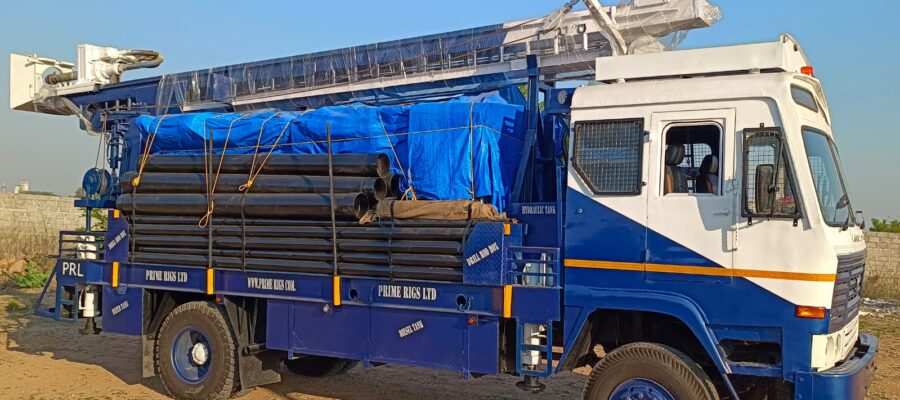
How does a well-drilling rig operate?
In the almost four decades that many trusted companies have been in the water well drilling rig industry, they’ve discovered that most people don’t consider the effort and technology that goes into ensuring a steady supply of clean, great-tasting drinking water. Although many households in India get their water from a private well, it is likely that they did not engage a good contractor and were not there throughout the drilling process. Observing a well-drilling rig at work may be rather remarkable; this is how it operates.
How Does A Well-Drilling Machine Operate?
A well drilling rig is a massive piece of equipment that must be transported by truck to the location where the well will be drilled and set up there. This kind of drilling is known as “cord drilling,” which involves a heavyweight being raised and then lowered in a circular motion to create holes in the ground. A wide range of bits may be used with a rotary drill. For drilling and soil removal, the most common types of bit are long cable bits with interlocking steel bits, which both rotate clockwise. Rock rises to the surface when the bit bends. Water or mud is used to cool the drill bits because the turning bit becomes heated.
The objective of well drilling is to reach a deep aquifer or water source, however, the drilling does not end there. The well-drilling business will continue to dig below the water table to guarantee the well has a sufficient supply and a long life. In most situations, the depth of bedrock wells is between 100 and 500 feet, although, in other instances, the depth might exceed 500 feet.
Putting in Well Casings
Casings are lengthy steel or plastic pipes that line a new well to avoid collapse and pollution of the water below during drilling. The annulus is a two-inch space between the well wall and casing. This is filled with gravel and topped with cement for the last twenty feet to prevent surface pollutants from entering the well and contaminating its water source. In addition, casings prevent the well from freezing in high winter temperatures.
While some well-drilling firms install the casing as they drill, others may install the pipe after the well has been drilled.
Maintaining Water Source Cleanliness
The water supply just at bottom of well must be protected against debris as well as other surface contaminants by installing filters. Additionally, these filters prevent bigger particles from entering the water pump. The bottom of the well casing is fitted with a screen when drilling is complete. Gravel is also employed as a natural filtering media at the bottom of the well.
Expertise and Innovation
Hundreds of years ago, drilling a well required digging deep into the earth with shovels and buckets until groundwater was reached. Today, homemade water well drilling rigs can help homeowners have a stable supply of water for many years.
Recent Post
- Frequent Used: Heavy Construction Equipment and Instruments
- What Type of Water Drilling Should You Choose?
- How To Choose The Perfect Drilling Rig To Buy?
- Tips For Selecting the Right Drilling Rig According to Your Need
- Water Well Drilling: Numerous Advantages
- How To Find Affordable And Reliable Water Well Drilling Rigs For Sale?
- Everything You Need to Know About Water Construction Rigs
- Water Drilling Rigs: Know The Different Types
- Refurbished Borehole Drilling Machine: Is It Worth The Purchase?
- Safety for the Construction Industry: Why Does it Matter?
- Milling Or Drilling: Which Is The Right Process To Choose?
- Choosing A Construction Truck Rigs Supplier Keeping Perfection In Mind
- Factors That Can Help You Select The Best Water Well Drilling Rig
- What Makes Drilling Rigs Different From Milling Rigs?
- Water Well Drilling Rig: All You Need to Know About It
- Do’s and Don’ts of Choosing the Right Rigs
- Underground Drilling Rigs: Features That Make Them Unique And Most Recommended
- What are construction drilling rigs? Why do companies need them?
- How do drilling companies help you with core drilling exploration?
- Key Features and Benefits of Drilling Machines in the Construction Industry
- Exploring the Advantages of Portable Borewell Drilling Technology
- How to Choose the Right Drilling Rig for Your Needs
- Reasons to Invest in Absolute Guide for Rotary Drilling
- Selecting the Ideal Drilling Rig: Ensuring Safety, Efficiency and Cost-Effectiveness





